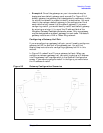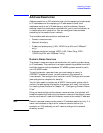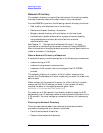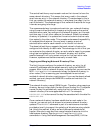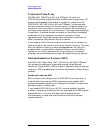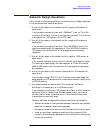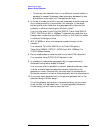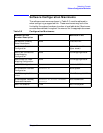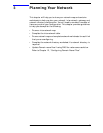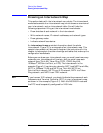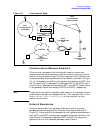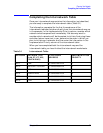
40 Chapter2
Networking Concepts
Network Design Questions
• To connect two networks that run on different protocol stacks, a
gateway is needed. A gateway does conversion between the two
protocols at every layer until the application layer.
6. Is the set of nodes you wish to connect composed of some nodes that
are in close proximity to one another (for example, in the same
building) and other nodes that are geographically distanced (for
example, in different buildings or different cities)?
If so, you may wish to use ThinLAN 3000/iX, Token Ring 3000/iX,
FDDI, 100VG-AnyLAN, or 100Base-T networks for nodes that are
located near one another and Point-to-Point or X.25 links for nodes
in different buildings or cities.
7. Will HP 9000s or other minicomputers need to be part of the
network?
If so, consider ThinLAN 3000/iX (or its ThickLAN option),
Token Ring 3000/iX, FDDI/iX, 100VG-AnyLAN, 100Base-T, or
X.25/iX System Access.
8. Do you need access to nodes on public or private X.25 networks?
If so, consider using DTC/X.25 iX Network Links.
9. Is a subset of nodes either geographically or organizationally
distanced from another subset of nodes?
If so, you may wish to establish a network boundary between them
in order to make them two separate networks joined by a full
gateway or router. Alternatively, you may want to use subnets to
divide one network into two or more physically distinct subnetworks.
10.If you must use a gateway half, is the partner-gateway half in the
same building or further away?
If the two gateway halves are in the same building, you can use a
direct connect link between them. If the two gateway halves are
further away, you will need to use a dial link.




